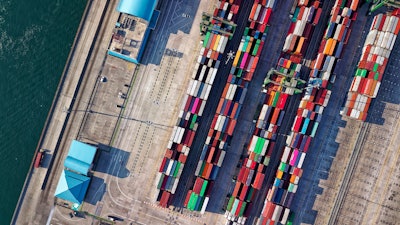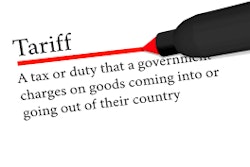
Significant reductions in CO2 emissions per container transported, a successful conversion of the vessel fleet to operate using low-sulphur fuel oil, and considerable improvements in quality – these are the key advances that Hapag-Lloyd made in the 2019 financial year in terms of its sustainability strategy. Today, the company is presenting its third sustainability report.
“Sustainability is more than just climate protection, as it also comprises ecological, economic, social and qualitative concerns in equal measure. In 2019, we succeeded in making a lot of progress in all four dimensions. For example, we furthered reduced our specific CO2 emissions, strengthened our social commitment and made huge investments in the quality of our service,” says CEO Rolf Habben Jansen. “This year, as well – despite the adverse effects of the COVID-19 crisis – we will continue to focus on additional improvements, including technological and digital innovations as well as further reductions in the emissions of our fleet.”
Improvements in all sustainability dimensions
One important sustainability objective of Hapag-Lloyd is reducing emissions. Compared to the reference year 2008, we have succeeded in reducing our specific CO2 emissions – meaning CO2 emissions per TEU/kilometre – by 50 percent. There have also been improvements when it comes to air quality. The new specifications on the maximum sulphur content of marine fuels issued by the International Maritime Organization (IMO) have been in force since 1 January 2020. Preparing for the so-called IMO 2020 regulations was accordingly one of the main focuses of the 2019 reporting year. Hapag-Lloyd got started with its planning early on and made the necessary conversions to its fleet. Since the beginning of the year, approximately 95 percent of Hapag-Lloyd’s vessels have been operating using low-sulphur fuel oils, which emit over 70 percent less sulphur oxides than the heavy fuel oil previously in use.
In the current year, Hapag-Lloyd will take more steps on the path towards the decarbonisation of ocean-going shipping. The IMO has set ambitious milestones for 2030 and 2050, with the aim of reducing CO2 emissions by 40 and 50 percent, respectively, compared to 2008. To help achieve these goals, Hapag-Lloyd will be the first shipping company in the world to start converting a large container ship to operate using a more climate-friendly liquid natural gas (LNG) propulsion system. The conversion work on the “Sajir” is expected to commence in the fourth quarter of 2020. In addition, Hapag-Lloyd will continue to work on alternative fuel solutions. For example, an initial test using a biofuel based on used cooking oil was launched at the beginning of the year.
Sustainability is a common task
For Hapag-Lloyd, sustainability means not only the implementation of measures, but also and especially dialogue and exchange. “Our sustainability measures also take into account the well-being of future generations. This makes it all the more important to bring all relevant parties – our employees, customers and shareholders, too – along on this journey. Sustainability is a common task, and it can only be achieved together with strong partners,” says Jörg Erdmann, Senior Director Sustainability Management. For example, Hapag-Lloyd has entered into collaborative efforts with scientific and research organisations, such as in the context of the Hapag-Lloyd Center for Shipping and Global Logistics (CSGL) at the Kühne Logistics University in Hamburg.
“Sustainability is a marathon rather than a 100-metre sprint. Given this fact, the issue will remain on our strategic agenda for the long term and be given high priority – also and especially in 2020, which has been an unusual year for all of us,” CEO Rolf Habben Jansen adds.



















